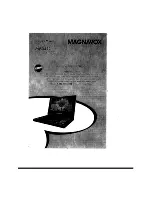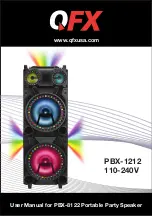
Configuring the internal baseband source
R&S
®
SMM100A
230
User Manual 1179.1341.02 ─ 05
Table 4-19: Waveform triggering: "Next Trigger Mode = Next Segment Seamless", "Trigger Source =
Internal"
"Trigger Mode"
Description
"Auto"
Output starts at once and the segment is generated continuously.
If the segment is changed in "Segment", the new segment is output seamlessly
after the output of the current segment is complete.
"Armed_Auto"
Output starts after the first trigger event. The segment is then generated continu-
ously.
If the segment is changed in "Segment", signal output is stopped and the new seg-
ment is not output until a trigger occurs.
"Single"
Output starts at once and the segment is generated continuously.
Each trigger event (re-) starts the segment; each next segment trigger event
switches over to outputting the subsequent segment once the output of the current
segment has been completed.
If the segment is changed in "Segment", the new segment is output seamlessly
after the output of the current segment is complete.
Table 4-20: Waveform triggering: "Next Trigger Mode = Next Segment Seamless", "Trigger Source =
External"
"Trigger Mode"
Description
"Armed_Auto"
Output starts after the first trigger event. The segment is then generated continu-
ously.
Each trigger event (re-) starts the segment; each next segment trigger event
switches over to outputting the subsequent segment once the output of the current
segment has been completed.
If the segment is changed in "Segment", signal output is stopped and the new seg-
ment is not output until a trigger occurs.
For description of the "Retrigger" and "Armed_Retrigger" trigger modes, see
.
4.9.5.4
Triggering in "Next trigger mode = sequencer"
The waveform files are processed according to the order and repetition cycles defined
in the special sequencing list file (
*.wvs
) assigned to the multi-segment waveform file.
4.10
Generating multi-carrier signals
To simulate complex multi-carrier scenarios with different baseband signals, the
R&S
SMM100A provides the possibility to generate multi-carrier waveforms. These
waveforms can consist of up to 512 carriers, each modulated by the same or by differ-
ent user-selectable baseband signal.
The multi-carrier waveform is a practical solution for the generation of a complex
broadband signal, for example:
●
Multi-carrier waveforms build from signals
of different
communication standards
(e.g. CDMA2000 or 3GPP FDD)
Generating multi-carrier signals
















































